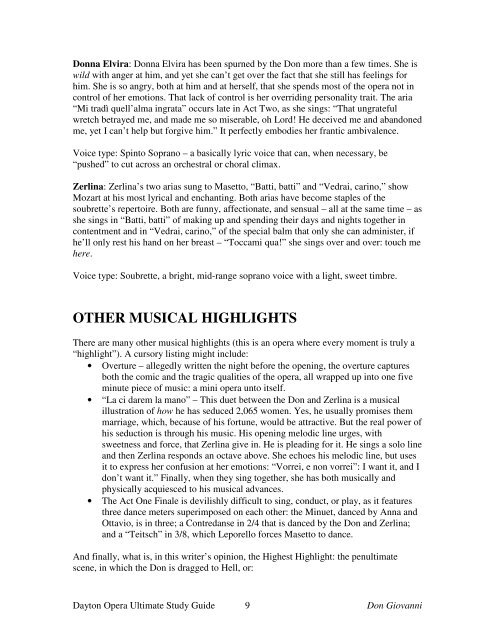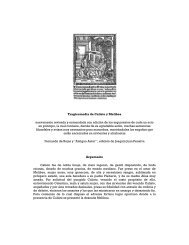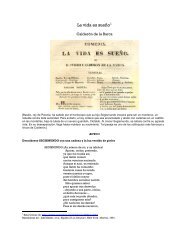You also want an ePaper? Increase the reach of your titles
YUMPU automatically turns print PDFs into web optimized ePapers that Google loves.
<strong>Don</strong>na Elvira: <strong>Don</strong>na Elvira has been spurned by the <strong>Don</strong> more than a few times. She is<br />
wild with anger at him, and yet she can’t get over the fact that she still has feelings for<br />
him. She is so angry, both at him and at herself, that she spends most of the opera not in<br />
control of her emotions. That lack of control is her overriding personality trait. The aria<br />
“Mi tradì quell’alma ingrata” occurs late in Act Two, as she sings: “That ungrateful<br />
wretch betrayed me, and made me so miserable, oh Lord! He deceived me and abandoned<br />
me, yet I can’t help but forgive him.” It perfectly embodies her frantic ambivalence.<br />
Voice type: Spinto Soprano – a basically lyric voice that can, when necessary, be<br />
“pushed” to cut across an orchestral or choral climax.<br />
Zerlina: Zerlina’s two arias sung to Masetto, “Batti, batti” and “Vedrai, carino,” show<br />
Mozart at his most lyrical and enchanting. Both arias have become staples of the<br />
soubrette’s repertoire. Both are funny, affectionate, and sensual – all at the same time – as<br />
she sings in “Batti, batti” of making up and spending their days and nights together in<br />
contentment and in “Vedrai, carino,” of the special balm that only she can administer, if<br />
he’ll only rest his hand on her breast – “Toccami qua!” she sings over and over: touch me<br />
here.<br />
Voice type: Soubrette, a bright, mid-range soprano voice with a light, sweet timbre.<br />
OTHER MUSICAL HIGHLIGHTS<br />
There are many other musical highlights (this is an opera where every moment is truly a<br />
“highlight”). A cursory listing might include:<br />
• Overture – allegedly written the night before the opening, the overture captures<br />
both the comic and the tragic qualities of the opera, all wrapped up into one five<br />
minute piece of music: a mini opera unto itself.<br />
• “La ci darem la mano” – This duet between the <strong>Don</strong> and Zerlina is a musical<br />
illustration of how he has seduced 2,065 women. Yes, he usually promises them<br />
marriage, which, because of his fortune, would be attractive. But the real power of<br />
his seduction is through his music. His opening melodic line urges, with<br />
sweetness and force, that Zerlina give in. He is pleading for it. He sings a solo line<br />
and then Zerlina responds an octave above. She echoes his melodic line, but uses<br />
it to express her confusion at her emotions: “Vorrei, e non vorrei”: I want it, and I<br />
don’t want it.” Finally, when they sing together, she has both musically and<br />
physically acquiesced to his musical advances.<br />
• The Act One Finale is devilishly difficult to sing, conduct, or play, as it features<br />
three dance meters superimposed on each other: the Minuet, danced by Anna and<br />
Ottavio, is in three; a Contredanse in 2/4 that is danced by the <strong>Don</strong> and Zerlina;<br />
and a “Teitsch” in 3/8, which Leporello forces Masetto to dance.<br />
And finally, what is, in this writer’s opinion, the Highest Highlight: the penultimate<br />
scene, in which the <strong>Don</strong> is dragged to Hell, or:<br />
Dayton Opera <strong>Ultimate</strong> <strong>Study</strong> <strong>Guide</strong> 9 <strong>Don</strong> <strong>Giovanni</strong>





